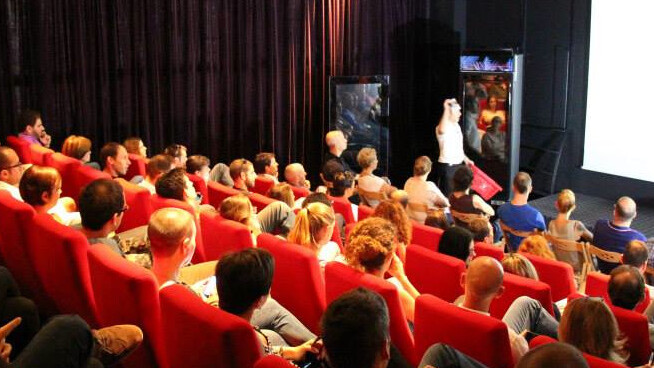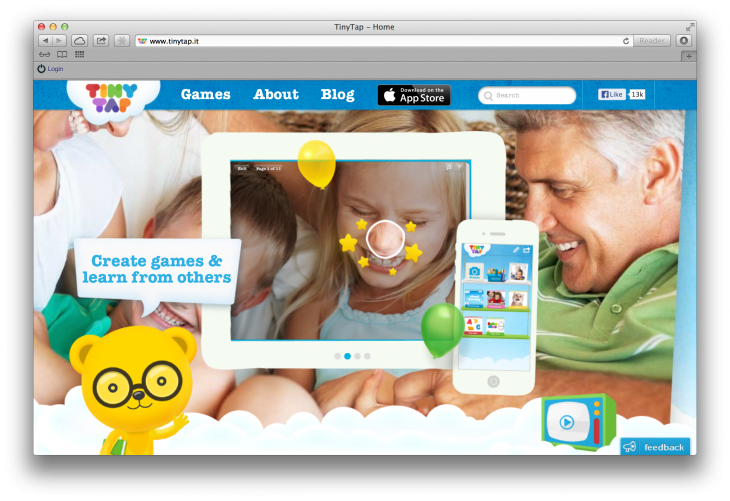
This post by Avi Schneider was originally published by Israeli tech blog Geektime.
It’s a crazy noisy world out there today, and trust me, no one’s more aware of this reality than the ad world. Advertisers pay for 99% of our media entertainment and yet they have to beg for morsels of our time like a corporate Oliver Twist in a $3,000 business suit asking, “Please media consumer, may I have some more?”
The facts of this new media world mean that we consumers never have to pay attention to another advert ever again. So if we don’t have to pay attention, advertisers have to make us want to pay attention. In order to pull that off, the term ‘creative’ can no longer refer exclusively to the ad message, or too often that message is going to be ignored. Instead, our notion of creative must be expanded to include the message delivery system as well – i.e. ad-tech.
Today (Wednesday) at the McCann Erickson building in Tel-Aviv and in conjunction with Geektime, the hottest new technologies in ad-tech were on display by nine Israeli startups showing off their solutions for how they plan to recapture the double-take inducing power of advertising over the consumer. What follows is a brief description of each of these nine companies and the technology they’re bringing to the table:
TinyTap
TinyTap allows brands to host their own branded children’s game development environment where parents can design and piece together learning games for their toddlers. The interface is super intuitive allowing for any parent who can swipe through an iPad to be able to design and create their own games in seconds – irregardless of a complete lack for technical knowhow.
The branded games promote brand loyalty and brands are even able to host their own internal game storefronts within TinyTap’s platform.
MTS Advertising
MTS (which doesn’t have a website yet) uses smart adverts that analyse consumer purchases at the register and serves up deals on complementary products. So far it sounds pretty standard but the company took things a step further and incorporated a Kinect-based interactive gesture platform that encourages consumers to interact with the ad in-store.
For example, children (or adults, I guess) perusing the dairy aisle might find themselves bobbing for chocolate milk bubbles in a gesture based augmented reality game to win a discount coupon for a fun-pack of chocolate milk singles.
Zeekit
Zeekit is an augmented reality platform that allows consumers to highlight any element of a picture, making that element formattable to color and texture changes by the user.
Consumers can ‘try on’ different colored clothing articles, shades of lipstick, colors of eye glass frames – they can even see how a certain carpet or furniture texture might go with their new office. Users are then able to share their top options with their social networks and get feedback as to what to purchase while they’re still in the store.
FORREAL
FORREAL seeks to connect the virtual world with the real world using mobile applications, interactive installations, art performances and other elements to get consumer crowds to engage with brands.
For example; sending a remote control quadcopter flying through a club where it sprays sample bursts of a new fragrance over the party floor, or a robot painting cannon controlled by iPhone users to paint a public wall. Essentially they’re a technology based, guerrilla style ad-marketing company in the making.
WakingApp
WakingApp, (a personal favorite) creates augmented reality based games, videos and other advertising collateral on the backs of cereal boxes, ketchup bottles, newspapers – you name it.
Seeing a t-rex appear and start hopping along a mockup jungle depicted on the back of a blown up cereal box, I could only imagine kids’ reactions when they see this kind of thing at the breakfast table – they’re gonna go nuts. Seriously guys, you had me at t-rex.
Blaid
Blaid is a startup specializing in gesture based platforms and body language real-time feedback. The company’s algorithmic analysis and reporting of body language gives salespeople an indication of real consumer sentiment and intentions with regard to purchasing.
Brands can take this feedback and use it to inform adjustments to elements of their sales efforts after seeing which of these elements induced strong positive or negative reactions from the consumer, and at which points of the sales cycle did these reactions occur.
iNevermiss
Inspired by a trip to the supermarket that came a day late to capitalize on a 40% discount on some random item or other, iNevermiss was formed to serve as an integration platform that keeps consumers apprised of the latest upcoming deals and specials directly through their personal calendar.
http://www.youtube.com/watch?v=UQHZCQfMBB8
KwazyLABS
KwazyLABS uses augmented reality to keep consumers engaged in campaigns across every conceivable marketing channel.
Consumers use their smartphone to interact with key elements of TV commercials, billboards, posters and even other consumers to win discounts and specials. In their demo, KwazyLABS put a virtual and social spin on Snapple’s 1990’s bottle cap collecting campaign, asking consumers to ‘collect’ virtual beer caps from TV spots, posters and friends.
EyeFeelIt
EyeFeelIt is a software/hardware combo operation who developed 3D interactive store displays where users browse and buy items at storefronts similar to how they might buy the same items online. Only with EyeFeelIt, consumers who rushed out for a late hour shopping spree will never find themselves denied, even if they wind up hitting the store well after closing time.
Additionally, the company has developed monitor displays on a transparent glass base, serving to turn commercial refrigerator doors into interactive computer displays. Viewing adverts, searching nutritional content or purchasing items through a PayPal account off the fridge door are just a few of the possible applications for this kind of technology.
Get the TNW newsletter
Get the most important tech news in your inbox each week.






